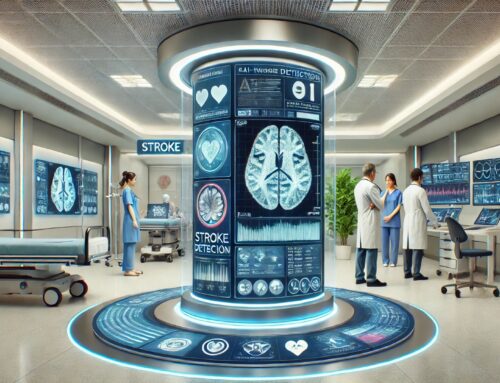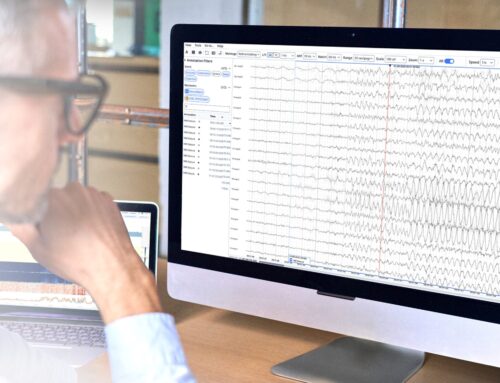Automated Spinal Navigation Device Reduced Needle Redirects by 48% for Experienced Anesthesia Providers
CHARLOTTESVILLE, VA., December 16, 2019 – RIVANNA today announced the results of a recent clinical trial showing that Accuro automated spinal navigation system significantly enhanced the accuracy of spinal anesthesia placement compared to the traditional palpation-based approach in obese patients undergoing orthopedic surgery. Published in the most recent issue of the Regional Anesthesia & Pain Medicine Journal, the trial involved experienced anesthesiologists treating lower limb surgery patients.
“This trial is particularly notable because it proves that neuraxial image guidance is not just a tool to help inexperienced trainees. Anesthesia providers participating in this trial were highly skilled at performing these procedures conventionally,” comments Will Mauldin, PhD, co-founder and CEO of RIVANNA, the device manufacturer and marketer. “Yet, in this patient population, they still benefitted statistically and clinically from Accuro’s automated image guidance technology.”
In the trial, researchers found that patients given a spinal block under Accuro ultrasound-based spinal navigation experienced a median number of 3 needle redirects (from 0 to 9) and 1 needle pass through the skin (from 1 to 2) compared to 6 (from 1 to 16) and 1 (between 1 and 2) respectively for conventional spinal palpation for bony landmarks. Both endpoints were statistically significant in this study enrolling 130 patients.
Obese body mass index (BMI) is associated with increased complications during the delivery of neuraxial anesthesia, including epidural, spinal and combined spinal-epidural (CSE) procedures, due to physician difficulty, whatever their level of experience, in identifying bony landmarks in this population. These landmarks guide physicians in identifying the appropriate site for needle placement.
For patients, additional needle redirects prolong the procedure and cause added pain and discomfort, and are often accompanied by patient dissatisfaction. Other negative consequences associated with sub-optimal neuraxial anesthesia placements include postdural puncture headaches, back pain, and in very rare instances, paralysis.
The trial, conducted at the Rizzoli Orthopedic Institute in Bologna, Italy, examined patients aged 18 to 75 with a BMI above 30 kg/m with American Society of Anesthesiologists Physical Status of I-III. Its primary aim was to examine the number of needle redirects required to complete the procedure when conducted with and without Accuro’s ultrasound (US)-based guidance. In the study, redirection was defined as needle advancement preceded by a withdrawal of 1 cm or more as physicians fine-tuned the site for anesthesia delivery. Skin passes were defined as a single needle introduction through the skin. Participating anesthesiologists were experienced in both conventional palpation and Accuro US techniques.
Patients in the trial were randomly assigned to either the manual palpation control or Accuro US group. The Accuro patient group was scanned prior to needle insertion with the handheld, battery operated device to visualize spine bony landmarks and identify the appropriate interlaminar space at the desired intervertebral level. The Accuro system itself combines precise, automated 3D image guidance with sophisticated BoneEnhance® image reconstruction technology optimized for high bony anatomy contrast. A flexible, handheld form factor enables real-time operation by the anesthesia provider.
Results were statistically adjusted for variables such as age, gender and BMI within each group. The number of failed blocks in the control group was two but improved in the Accuro group where no failures were observed. Procedures performed with Accuro took slightly longer to perform. Authors suggest that this may be due to the time involved placing a sterile cover over the device because needle placement time was not tracked separately from the procedure overall. While authors acknowledge some limitations to the study, they stress that corrective actions were taken to compensate for these.
“This study is the latest in a growing body of clinical evidence collected from around the world and enlisting more than 600 subjects, all pointing to the same conclusion that an Accuro-guided technique is superior to a ‘blind’ palpation-based approach. This has now been demonstrated irrespective of provider experience level, type of neuraxial anesthesia performed and amount of prior training with the instrument,” comments Will Mauldin. “With this study and Accuro’s trailblazing technology, we anticipate the field will migrate to an image-guided standard of care in neuraxial anesthesia for the benefit of all patients and providers.”
The trial is registered at ClinicalTrials.gov registry (NCT03075488).
About RIVANNA and Accuro
Accuro® by RIVANNA® is the world’s first spinal navigation device designed to improve the safety, speed, and efficiency of epidural and spinal anesthesia. The revolutionary platform features BoneEnhance®, which optimizes ultrasound for the visualization of bony versus soft tissue anatomy, and SpineNav3D™, which automates measurements of the spinal midline, epidural depth and trajectory. Accuro was engineered and commercialized by RIVANNA, an innovative medical device company headquartered in Charlottesville, VA. For anesthesia providers, certainty can be effortless with Accuro. For more information, visit www.rivannamedical.com.












